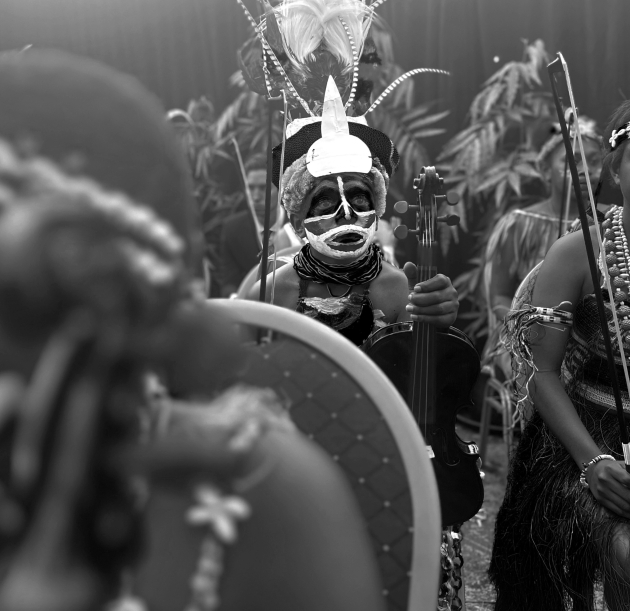
A Violin at the End of the World
Antonio Denti | South Pacific
Photographer: Antonio Denti
Exhibit Title: A Violin at the End of the World
Location: South Pacific
A Violin at the End of the World is photographic travelogue shoot during Pope Francis' travels to the South Pacific of September 2024. I had the chance to travel with the Pope's convoy. This essay is obtained by systematically following the Pope but consistently turning the camera 180 degrees away from him, to try and capture what he saw in the far lands he visited, who is saw and the world that constantly disclosed in front of his eyes as he move through it, by car, popemobile of wheelchair. Not surprisingly, it is mostly human faces. In the end, the human face sums up the complex histories, the wars, the sentiment of any land.
''A Violin at the End of the World'' is a photographic travelogue shot during Pope Francis' travels to the South Pacific of September 2024. I had the chance to accompany the papal convoy during his journey. ''A Violin...' is obtained by systematically following Francis but consistently turning the camera 180 degrees away from him, to try and capture what he saw in the far lands he visited, the humanity he saw and the world that constantly disclosed in front of his eyes as he move through it, by car, pope-mobile or wheelchair. The Pope himself - despite being the ''cursor'' of this story - is never seen in the project.
The deepest reasons why the ageing Pontiff - suffering of poor health and reduced mobility - decided to travel to the other side of the world, as seen from the Vatican, are really known only to himself. I imagine, arbitrarily, that to him - an Argentinian man who introduced himself as a Pope chosen at the end of the world - it may have been a meaningful journey to an other version of the many physical and metaphysical world's ends. And a way to question - when talking of humans - how you define the end and how the beginning.
Not surprisingly, summing up my picturing of what Pope Francis saw the sediment is made mostly by human faces. It makes me think of a memorable tale by Jorge Luis Borges about a man who spent most of his life try to draw the world, tracing on paper infinite battles and ships, heroes and villains, mountains and rivers, only to find out when old and approaching the end that he had actually drawn a faithful portrait of his face. The human face in fact sums up the complex histories, the many wars, the sentiment of any land. As well as the deepest feelings, love, defeat, joy, despair and hope, of the individual humans that inhabit that land. Where we were, the power of the tribal bonds, the harsh history of colonial exploitation and domination, the deepest roots and the music of a violin - a baroque instrument born in 1600 Europe - all blended and this is what the some special visitor must have seen.
Make Comment/View Comments